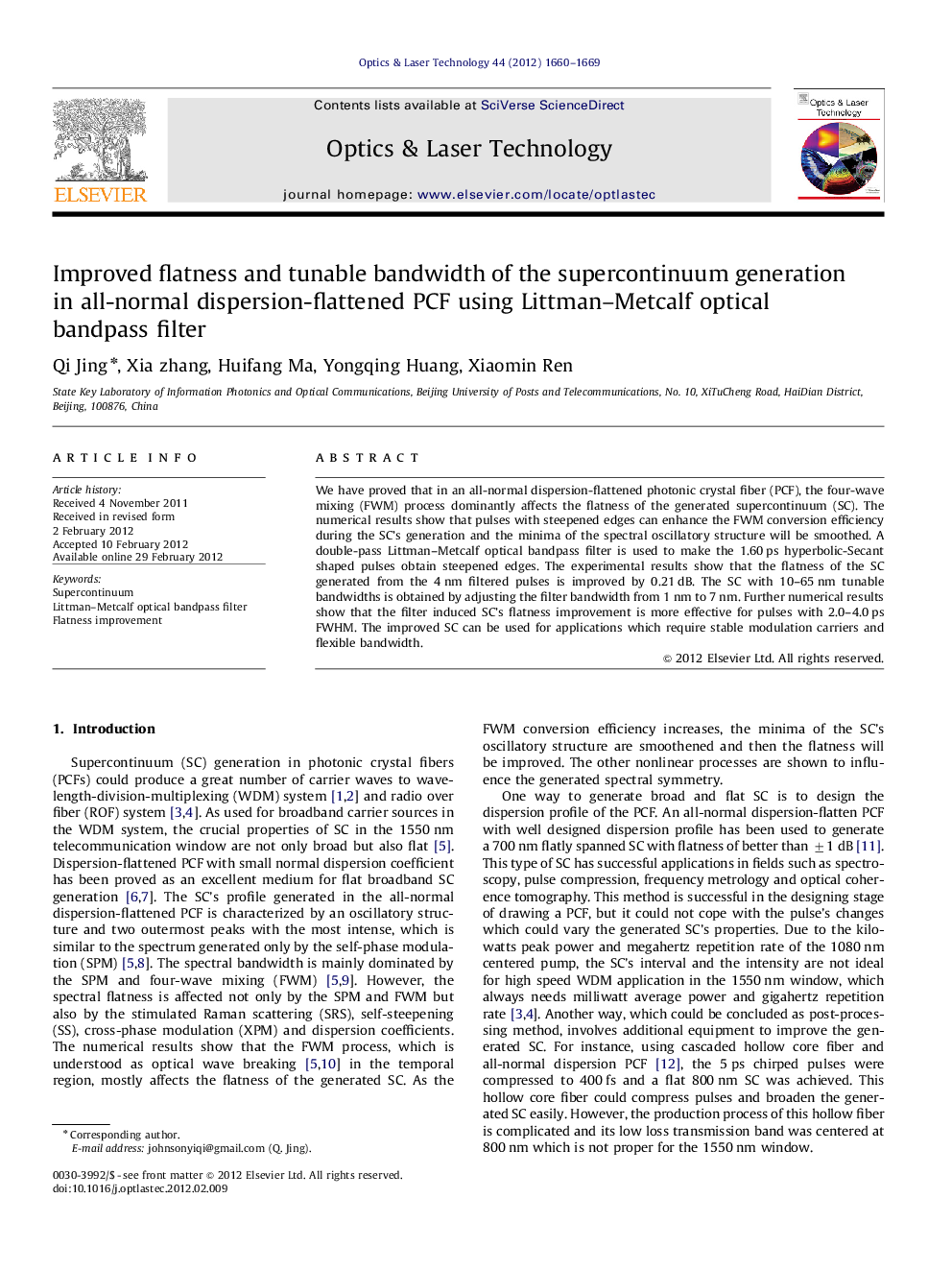| Article ID | Journal | Published Year | Pages | File Type |
|---|---|---|---|---|
| 733766 | Optics & Laser Technology | 2012 | 10 Pages |
We have proved that in an all-normal dispersion-flattened photonic crystal fiber (PCF), the four-wave mixing (FWM) process dominantly affects the flatness of the generated supercontinuum (SC). The numerical results show that pulses with steepened edges can enhance the FWM conversion efficiency during the SC’s generation and the minima of the spectral oscillatory structure will be smoothed. A double-pass Littman–Metcalf optical bandpass filter is used to make the 1.60 ps hyperbolic-Secant shaped pulses obtain steepened edges. The experimental results show that the flatness of the SC generated from the 4 nm filtered pulses is improved by 0.21 dB. The SC with 10–65 nm tunable bandwidths is obtained by adjusting the filter bandwidth from 1 nm to 7 nm. Further numerical results show that the filter induced SC’s flatness improvement is more effective for pulses with 2.0–4.0 ps FWHM. The improved SC can be used for applications which require stable modulation carriers and flexible bandwidth.
► A Littman-Metcalf optical bandpass filter is used to steepen Sech pulse edges. ► The bandwidth of the supercontinuum is tunable by adjusting the filter bandwidth. ► The flatness of the supercontinuum is improved by the steepened pulses. ► The relationship between pulse width and the flatness improvement is studied.
